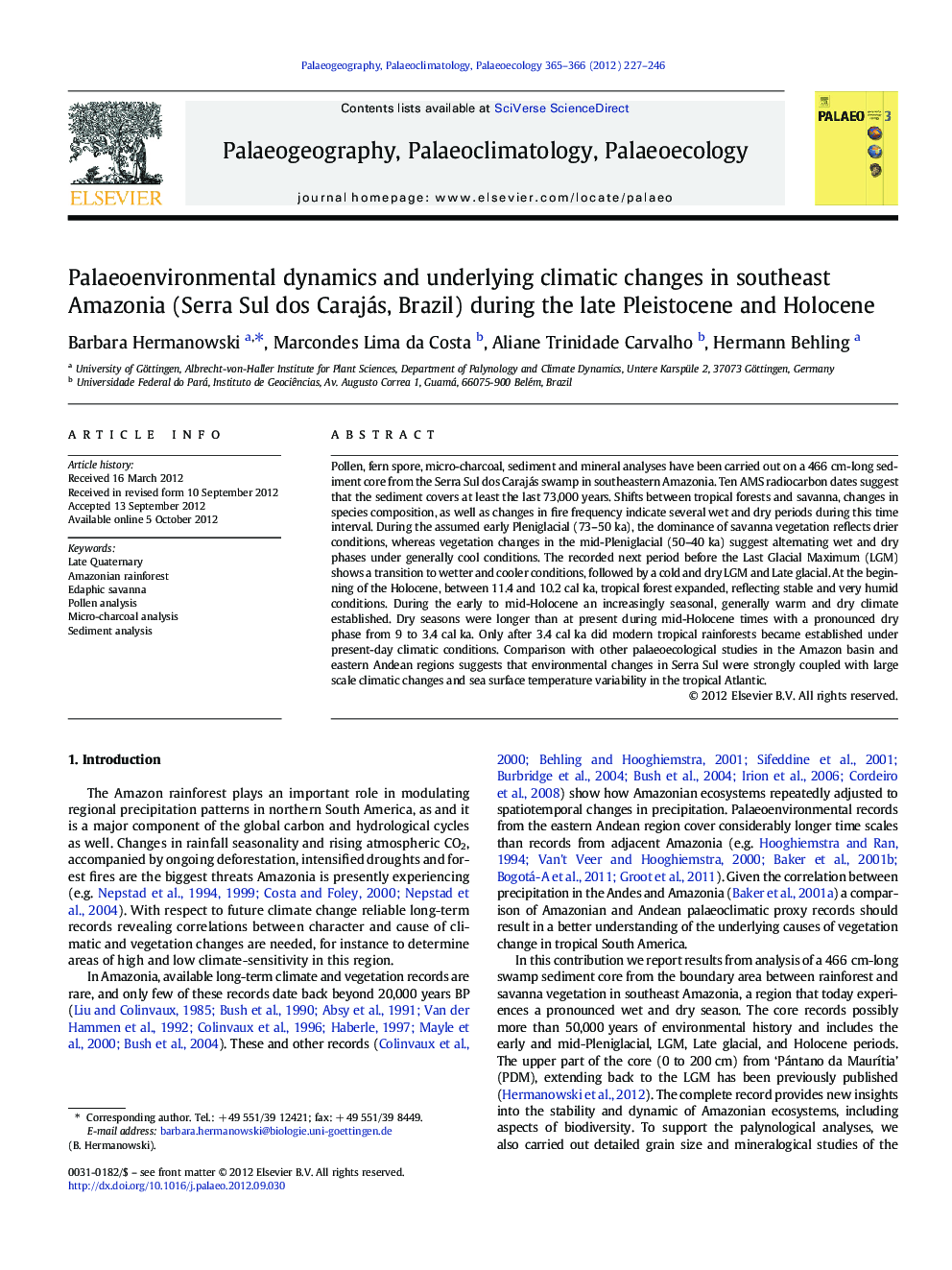| Article ID | Journal | Published Year | Pages | File Type |
|---|---|---|---|---|
| 4466739 | Palaeogeography, Palaeoclimatology, Palaeoecology | 2012 | 20 Pages |
Pollen, fern spore, micro-charcoal, sediment and mineral analyses have been carried out on a 466 cm-long sediment core from the Serra Sul dos Carajás swamp in southeastern Amazonia. Ten AMS radiocarbon dates suggest that the sediment covers at least the last 73,000 years. Shifts between tropical forests and savanna, changes in species composition, as well as changes in fire frequency indicate several wet and dry periods during this time interval. During the assumed early Pleniglacial (73–50 ka), the dominance of savanna vegetation reflects drier conditions, whereas vegetation changes in the mid-Pleniglacial (50–40 ka) suggest alternating wet and dry phases under generally cool conditions. The recorded next period before the Last Glacial Maximum (LGM) shows a transition to wetter and cooler conditions, followed by a cold and dry LGM and Late glacial. At the beginning of the Holocene, between 11.4 and 10.2 cal ka, tropical forest expanded, reflecting stable and very humid conditions. During the early to mid-Holocene an increasingly seasonal, generally warm and dry climate established. Dry seasons were longer than at present during mid-Holocene times with a pronounced dry phase from 9 to 3.4 cal ka. Only after 3.4 cal ka did modern tropical rainforests became established under present-day climatic conditions. Comparison with other palaeoecological studies in the Amazon basin and eastern Andean regions suggests that environmental changes in Serra Sul were strongly coupled with large scale climatic changes and sea surface temperature variability in the tropical Atlantic.
► Multiproxy analysis provides > 50,000 years of environmental and climate change. ► Changing plant diversity reveals unstable rainforest ecosystems in SE-Amazonia. ► Increasing fire activity in the Holocene associated with atmospheric temperatures ► Strongest fire activity coeval with mid-Holocene dry event in northern S-America ► SE-Amazonia sensitive to variable Atlantic SSTs and the meridional SST gradient
